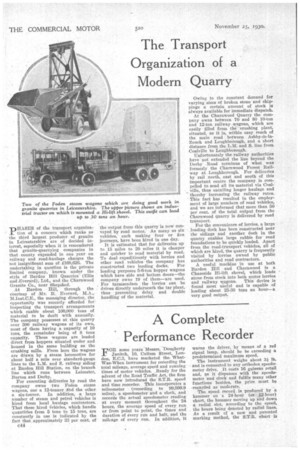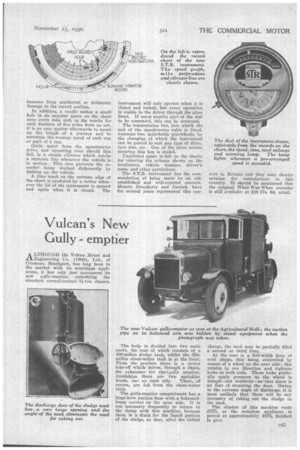A Complete Performance Recorder
Page 66

Page 67

If you've noticed an error in this article please click here to report it so we can fix it.
DOR some years Messrs. -Dougherty janitch, 10, Cullum Street, London, E-C.3, have marketed the WhatWas-When instrument for recording the total mileage, average speed and running times of motor vehicles. .Ready for the advent of tho Road Traffic Act, the firm have now introduced the S.T.R. speed and time recorder. This incorporates a mileometer (recording to 99,999.9 miles), a speedometer and a clock, and records the actual speedometer reading at every moment throughout the 24 hours, the average speed of every run or from point to point, the times and duration of every run and halt, and the mileage of every run. In addition, it warns the driver, by means of a red signal lamp, should he be exceeding a predetermined maximum speed.
The instrument weighs about 3i lb. and is connected to any orthodox speedometer drive. It costs 16 immune from accidental or deliberate damage to the record surface. In addition, a needle makes a small hole in an annular space on the chart once every mile and, as the marks for each distance of five miles form an arc, it is an easy matter afterwards to count up the length of a journey and to ascertain the average speed of each run or part of a run. Quite apart from the speedometer drive, and operating even should this fail, is a simple vibrator which marks a separate line whenever the vehicle is in motion. This also prevents the recorder being worked dishonestly by jacking up the vehicle. • A time mark on the extreme edge of the chart is produced by a cutter whenever the lid of the instrument is opened and again when it is closed. The instrument will only operate when it is closed and locked, but every operation is visible to the driver through the glass front. If users require part of the dial to be concealed, this can be arranged. The transmission box, into which the end of the speedometer cable is fitted, contains two detachable gearwheels, by the changing of which the instrument can be geared to suit any type of drive, tyre size, etc. One of the three screws securing this box is sealed. Unprinted space is left on the charts for entering the mileage shown on the totalizator, vehicle number, driver's name and other particulars. The S.T.R. instrument has the commendation of being made by an oldestablished and well-reputed concern. Messrs. Dougherty and Janitch have for several years represented this con cern in Britain and they may shortly arrange for manufacture in this country. It should be mentioned that the original What-Was-When recorder is still available at f10 17s. 43(1. retail.Tags












































































































